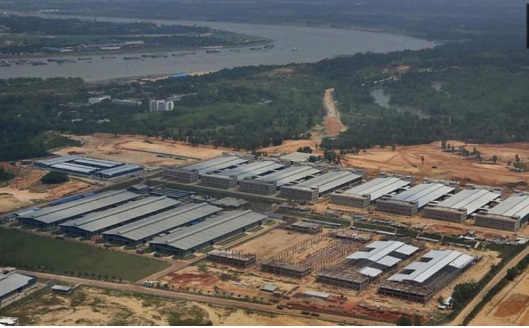Getting the most out of our economic zones
Syed Akhtar Mahmood | Source : The Daily Star, 09 April 2025

In 2011, Bangladesh lost a great opportunity to break into the global value chain for electronics. The Korean giant, Samsung, which had entered Vietnam just a few years prior, had set its eyes on Bangladesh. It wanted to invest $1.25 billion in an electronics plant in Chattogram that would employ 50,000 people. It wanted 250 acres of land to build its plant. Bangladesh could not provide that land. Samsung decided to take that investment to Vietnam and expand its operations there.
By the early years of the new century, the country was ready for an industrial take-off. But there was an emerging constraint that stood in the way. Businesspeople had started complaining about it. Newspapers were reporting it anecdotally. Then, in 2007, solid evidence came in the form of a World Bank report. An investment climate assessment for Bangladesh, the second in a series that had started in 2002, showed that scarcity of serviced industrial land was becoming a serious constraint.
Both the 2002 and 2007 investment climate assessments by the World Bank listed the top five constraints faced by businesses. Four of these were present in both reports. What was new this time was the access to land constraint. In 2007, almost 50 percent of the respondents identified this as a major or severe constraint—this was up from about 30 percent in 2002. Land scarcity was a perennial problem. Weaknesses in land recording and titling compounded it. Businesses found it difficult to obtain unencumbered and serviced industrial land, with good access to infrastructure and utilities. The environment was also harmed by rapid industrialisation. Entrepreneurs had set up factories indiscriminately, and scarce land was being used inefficiently.
At that time, the country had a small number of export processing zones (EPZs) and about 60 industrial parks. The latter were in bad shape, lacking good infrastructure and utilities, and some were in locations that made little economic sense. The EPZs were reasonably well-run, but these were, by definition, all export-oriented. The total area of available plots in these zones was also limited. Demand was rising for increasing the supply of serviced industrial land through the establishment of more zones, including those accessible by domestic businesses. Moreover, the inability to provide serviced land was a major factor discouraging FDI.
It was in this context that the government started thinking about an ambitious economic zones programme in 2007. This was meant to be a transformative agenda that would not only address the problem of serviced industrial land but would also help ensure that future industrialisation of the country would be better organised and environmentally sustainable. The programme also envisaged a move away from the purely public sector model of zone development and management prevalent in Bangladesh. This was a bold idea for a country. The report argued for allowing varying degrees of private sector participation, such as purely private zones where the private sector both develops and manages the zones, and PPP zones which may be publicly developed but managed by the private sector.
Where do we stand with the economic zones now? Currently, 122 investment projects are being implemented in the economic zones, with a total land allocation of 1,950 acres. This land amount compares well with the total land occupied by investors (2,300 acres) in the eight EPZs of the country, which represent an earlier generation of economic zones. In other words, the amount of serviced land made available to investors through zones has almost doubled with the advent of the new economic zones.